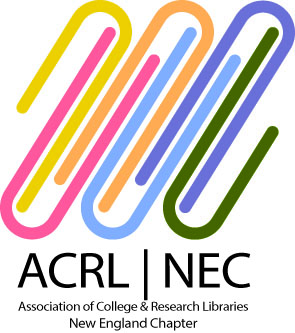Type
Presentation
DOI
https://doi.org/10.7275/y6fs-4135
Session Description
Embedded librarianship has developed over the past score of years to become a high-engagement, high-impact practice with the potential of meeting students where they are rather than expecting students to ask for help. When it is successful, it leads to meaningful faculty-librarian collaborations and higher student engagement with information literacy activities. In advance of assessing and redesigning the Embedded Librarian program at Fitchburg State University, the presenters conducted a literature review of recent publications on the practice of embedded librarianship.
Based on the literature reviewed, it became clear that effective embedded librarianship demands massive commitment of time and energy on the part of librarians. Examples of this commitment may include but are not limited to departmental office hours in the academic department, assignment design and assessment with faculty, and creating content in a class learning management system (LMS), in addition to proactive outreach to faculty in order to build opportunities for further embedding. This raises the question of how librarians can develop and maintain a sustainable embedded librarianship program. In a work climate that requires academic librarians to fulfill multiple roles for the institution, it may be difficult or impossible to find the time to build out such embedded programs without contributing to rampant burnout within the field.
During this session, we will interrogate the following and propose solutions:
- How do we make practices like embedded librarianship that, by necessity, require a high time investment manageable alongside other workloads?
- In a perfect world, what would a sustainable embedded librarianship program look like?
Type of Library
University Library
A Way Forward: Embedding Sustainable Work Practices into Embedded Librarianship
Embedded librarianship has developed over the past score of years to become a high-engagement, high-impact practice with the potential of meeting students where they are rather than expecting students to ask for help. When it is successful, it leads to meaningful faculty-librarian collaborations and higher student engagement with information literacy activities. In advance of assessing and redesigning the Embedded Librarian program at Fitchburg State University, the presenters conducted a literature review of recent publications on the practice of embedded librarianship.
Based on the literature reviewed, it became clear that effective embedded librarianship demands massive commitment of time and energy on the part of librarians. Examples of this commitment may include but are not limited to departmental office hours in the academic department, assignment design and assessment with faculty, and creating content in a class learning management system (LMS), in addition to proactive outreach to faculty in order to build opportunities for further embedding. This raises the question of how librarians can develop and maintain a sustainable embedded librarianship program. In a work climate that requires academic librarians to fulfill multiple roles for the institution, it may be difficult or impossible to find the time to build out such embedded programs without contributing to rampant burnout within the field.
During this session, we will interrogate the following and propose solutions:
- How do we make practices like embedded librarianship that, by necessity, require a high time investment manageable alongside other workloads?
- In a perfect world, what would a sustainable embedded librarianship program look like?


Comments
https://doi.org/10.7275/y6fs-4135